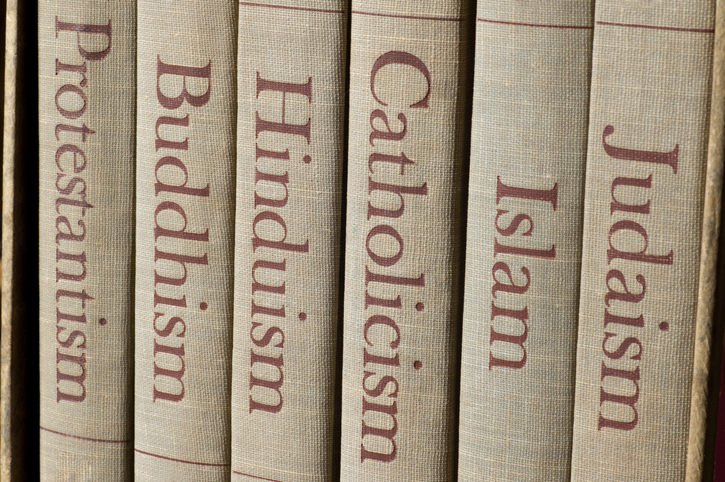
Three score years ago the U.S. Supreme Court forbade the teaching and symbols of religion in public schools. God is neither to be discussed, pictured nor even sung to at Christmas; maybe at graduations and football games students may express their thanks to God – up to a point.
It is proper, of course, for the teachers to relate the truths of Darwin and his theory of natural selection. But, it is improper to invite the student mind to wonder about just how all that material reality came to be in the first place. Could matter create itself; could all this something come from nothing?
Q: Teacher, would you explain?
A: School doesn’t teach about that; ask your mother.
The social effect of banishing God-talk from the classroom is very difficult to estimate using the statistical lenses of social science. But, with observation and common sense, one can hope broadly to describe the expectations of the justices and, then, the degree of their realization in our time. The court hoped: 1) to clarify that using the public education office to make children aware of our God debates (or, worse, of course, to take sides) occasions an “establishment of religion,” hence is forbidden; and 2) thereby to assure an atmosphere in public school purged of transcendental ideology, assuring offense to none and, instead, making a contribution to social unity.
The court’s first hope appears realized to a considerable degree. Litigation and administrative persuasion have been successful at eliminating many books and teaching materials that suggest the existence of God and his role in human life. There is, I believe, little of the transcendental left lurking in our curricula. The court’s purge has, of course, been greatly assisted by many state constitutions that, since the late 19th Century, have forbidden nearly all public assistance to religious private schools.
One of the primary effects of this exclusion of God is that the school must now present some picture of human happiness and its achievement that fades with death; and that picture must be consistent with a reason for good citizen behavior. Even without God we have to live together. With eternal salvation as a classroom no-no, the government must present a life-plan and defend it. And so it does. With God out of the picture, each of us is “to find ourselves,” set our own goals and do what’s best for number one. To teach the child otherwise – to recognize and honor an already established human rule and responsibility – would verge upon theology. Of course, the teacher and the system do have rules of conduct for the child, but these must be understood and defended principally as the assurance that everyone, to a point, lets the other fellow do his own thing.
Has secularization worked? I fear not.
The Supreme Court’s second hope – to help unify the society in spite of our conflicting beliefs – is, I think, in grave jeopardy. Over a long life span I have, since mid-century, watched our people turn both secular-minded and socially fractured. Religion has, for so many, become social poison. In desegregation litigation in Kansas City, I watched the ACLU, on “establishment” grounds, oppose the offer of 100-plus private schools (mostly religious) to do the work of integration that had been successfully refused by every white suburban public district. Secularity is more important than racial integration.
The social catastrophe we now witness did not begin with today’s divisive politics. The order of causation has been largely the opposite; and one primary source of our fragmentation, in my judgment, has been our successful secularization of schooling. Of course, this conclusion is beyond statistical or other systematic proof. And, of course, many enemies of human responsibility and mutuality flourish outside of traditional public schools. Even private education, in its more elite forms, has probably contributed.
Paradoxically, perhaps, I supported – and still do – the Supreme Court’s disapproval, in public schools, of many of the traditional forms of religious instruction. If parents freely choose to send their child to P.S. 202, that should settle it. It is the parent and the family where responsibility and authority for the decision must lie. Tragically, we have allowed the public system to conscript the poor and working folk of our cities, thus assuring both parent and child that their minds and judgment count for nothing.
Next time the reader starts to despair of our social and political order, let him stop and reflect upon the obvious remedies for this most spectacular element in our flight from social responsibility. God is out; the ordinary parent is out. Just who is in charge, and where is this specter of sheer selfishness leading us?


